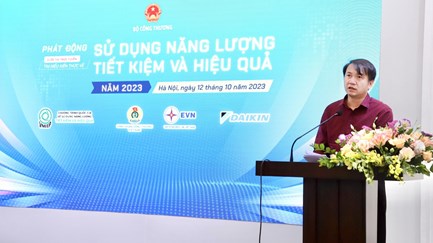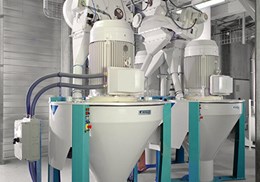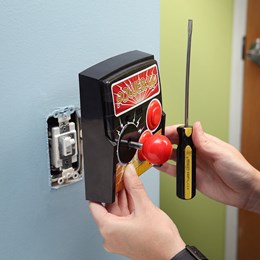Tuesday, 17/06/2025 | 11:20 GMT+7

On October 12, 2023, in Hanoi, the Energy Conservation Steering Committee Office (Ministry of Industry and Trade), in collaboration with relevant units, organized the launch ceremony of the online competition 'Study on energy efficiency and conservation in 2023'.
 New points on the amendment of the Law on Energy Efficiency and Conservation
New points on the amendment of the Law on Energy Efficiency and Conservation
 Power Generation from Waste Heat: A Breakthrough Helping Cement Plant Save 80 Billion VND Annually
Power Generation from Waste Heat: A Breakthrough Helping Cement Plant Save 80 Billion VND Annually
 Energy Manager Training Course – May 2025
Energy Manager Training Course – May 2025
 Energy-Saving Technologies for Devices and Equipment
Energy-Saving Technologies for Devices and Equipment
 Panasonic Applies Energy Efficiency and Conservation in Production
Panasonic Applies Energy Efficiency and Conservation in Production


























 National Assembly Conducts Preliminary Review of Amendment Draft of the Law on Energy Efficiency and Conservation
23/04/2025
National Assembly Conducts Preliminary Review of Amendment Draft of the Law on Energy Efficiency and Conservation
23/04/2025
 Canon Vietnam Optimizes Energy Efficiency and Conservation
Canon Vietnam Optimizes Energy Efficiency and Conservation
 Implementation of the Law on Energy Efficiency and Conservation in Southern Enterprises
Implementation of the Law on Energy Efficiency and Conservation in Southern Enterprises
 REQUEST FOR QUOTATION - C2.2.7: Organize Talk Show Programs
REQUEST FOR QUOTATION - C2.2.7: Organize Talk Show Programs
 Scaling Up Energy Efficiency for Leaders of Industrial Enterprises
Scaling Up Energy Efficiency for Leaders of Industrial Enterprises
 Energy efficiency and conservation at Hai Duong's Industrial Enterprises
Energy efficiency and conservation at Hai Duong's Industrial Enterprises
 Energy efficiency and conservation measures at Aeon Mall
Energy efficiency and conservation measures at Aeon Mall